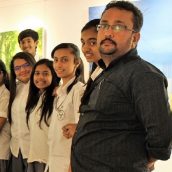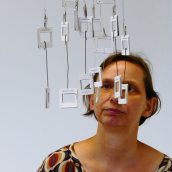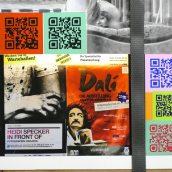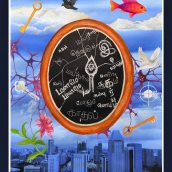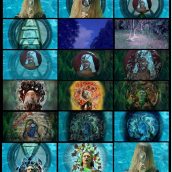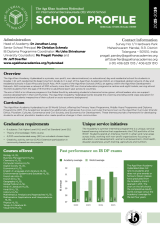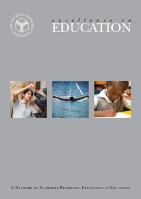Visual Arts Educator Models Lifelong Learning
Vijayaraghavan Srinivasan is a prolific painter and video artist whose work explores the intersection between self and society. He facilitates IB Visual Arts at the Academy, in his words, “aimed at developing a strong formalistic and aesthetic understanding as a basis for unique personal expressions in my students. I believe the post-modernist approach to teaching Visual Arts enables students to rediscover the intelligence towards relationships by creating links with multiple disciplines and capitalise on imaginative novelty.”
Over the last decade, he has participated widely in various biennales, video festivals, and art residency programs across India and the world. This allows him to gain insights into contemporary art styles and enhance his pedagogical strategies in teaching art appreciation to promote creativity, critical thinking and encourage artistic independence along with a spirit of inquiry.
“For seven years,” Vijay tells us, “I have had the wonderful opportunity to instruct a diverse group of primary, middle and senior school students. I encourage and expect my students to be confrontational towards themselves as well as towards what they are seeing, to always question – never settle, and to be aware of the wonder that can be revealed by the creation of a work through honesty, passion and empathy.”
In 2016, Vijay’s piece The Trinity Saga was published by Aesthetica Magazine in the UK. The Aesthetica Artists Directory is a global network of artists engaging with the professional art world through forums for discussions and interactivity both in the print and digital spheres, where the best in emerging art from around the world has a chance to be discovered.
Proving that he embodies the philosophy of lifelong learning, in the summer of 2016 Vijay attended an advanced-level visual arts course at the Berlin Art Institute Studio Program, which is closely tied to the IB Diploma Programme art curriculum. The course work offered advanced-level studio art practice and experimentation with mixed media. “The avant-garde art practices and experiments with unconventional processes further enhanced my understanding of contemporary art practice,” says Vijay, “and focused on producing artwork in a transdisciplinary way, with compassion and responsibility as key themes.”
After the course, Vijay had the opportunity to work on a collaborative project with Kelly Reedy, an American experimental artist who specialises in art therapy. Labelled Under the Ageis, the mixed media video installation explored the archaic myth of Medusa in relationship to the primal aspects and duality of the ‘great mother’ and ‘terrible mother’ archetypes. Reedy’s research into psychological theories concerning the quality of the attachment of the primary care giver or “mother” in relation to the development of her child’s security and sense of self, accentuate her exploration of the transformative powers of the creative process in art to heal and make whole again.
“I encourage my students to develop a strong formalistic and aesthetic understanding of art as a basis for expressing their own personal vision,” says Vijay. “I encourage each of them to grow on their own, to be free to make mistakes, to push themselves in ways that their work takes them. I feel that self-directed education is inevitably the best way to guide young people in their education as students of art.”


